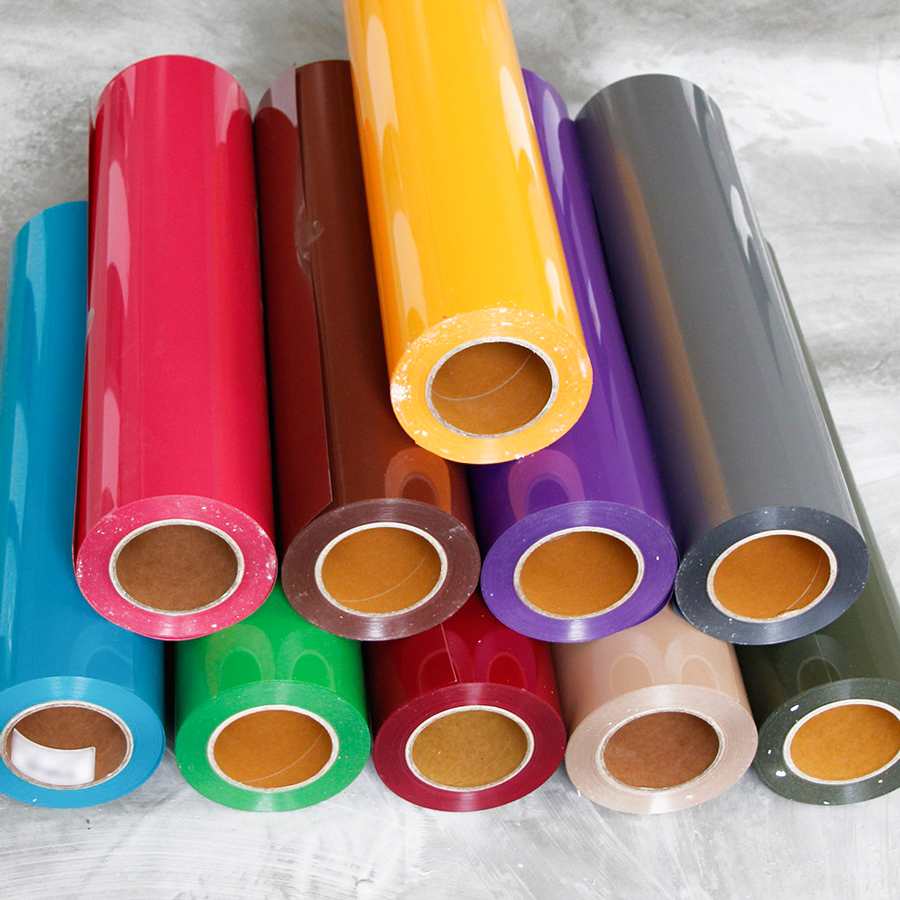Guide to Choosing the Right Heat Transfer Material
When created custom or branded clothing, there are many ways you can use to get the design onto your item. From screen printing to embroidery and even sublimation, the options are endless. The most popular is the heat transfer method.
A heat transfer uses a combination of heat and pressure to transfer images onto clothing and other items. Professionals use Heat transfer to create high-quality designs. The result is photo-realistic and colorful images. Many people wear t-shirts with heat press designs on them.
This form of printing uses different types of heat transfer materials. These are the materials that depend on heat to affix any design or graphic decoration to an item. These types of materials have a heat-activated adhesive. Back then, there was only one form of heat transfer material; improvements have seen the rise of new materials.
Types of Heat Transfer Materials
- Heat Transfer Paper. Professionals use this material to transfer printed designs onto fabrics such as cotton, polyester, and nylon. The paper goes into a laser or inkjet printer to create the designs. Then it goes into the heat-press to transfer onto the fabric. Transfer paper comes in light and dark. The light transfer paper is for white and light-colored fabrics. The dark transfer paper transfers the design onto black or dark-colored garments.
- Heat Transfer Vinyl. It is also known as iron-on vinyl. Essentially, it is vinyl with a heat-activated backing that lets it bond permanently onto garments. To use this method, you have to create a design, then transfer it into the vinyl cutter to cut out the design. Then you can heat press the cut-out material to the garment.
- Rhinestone Transfers. As the name suggests, rhinestone transfers use rhinestones (fake gems) to add sparkly designs to a garment. The ‘diamonds’ are shiny and eye-catching. They come in different colors and sizes. However, each has a flat back, on which you will find a heat-activated adhesive. To use this method, you have to arrange the gems in the preferred design and press them onto the garment with a heat press.
- Heat Transfer Embroidered Patches. Embroidery patches are pieces of embroidery in different sizes. Pros can sew them on, but some come with a heat-activated adhesive at the back. It takes away the option of sewing, and people predominantly use them for logos, names, and to show ranks.
How to Choose the Right Heat Transfer Materials
When it comes to picking the correct heat transfer materials, you should make a few considerations. Each of these materials has its pros and cons. Therefore, these considerations should help make the decision easier.
- Fabric content. The content of your fabric means what your garment is made of. Is it cotton, polyester, or nylon? You should always select a transfer material that will sit nicely on the fabric you will use. Rhinestones are not the best for stretchy fabrics, but iron-on vinyl and transfer paper are. Manufacturers create vinyl and transfer papers to work with almost any material, so when in doubt, go for these two options.
- Project quantity. If you are in for a large project, you need to find the most cost-effective materials. Also, consider how much time you will spend to produce these items. If you are doing five or fewer garments, then iron-on vinyl is a great option. It will not take long to cut and weed out the design. However, if you are working with ten or more, you should consider transfer paper because it is cost-effective and faster. Embroidery takes the most time, and it is the best material for less than five garments and specific events such as bridal showers and baby showers.
- Artwork. The complexity and colors of your design should help you make a knowledgeable decision. Vinyl is best for simple designs because you will not have to weed so much. If you choose a complex design for vinyl heat transfer, you will spend a lot of time weeding, and the result may not have the best clean-cut lines. Therefore, heat transfer paper is an excellent idea for complex designs. Also, consider the effect you want from the design. If it looks better sparkly, you are better off with a rhinestone application. Also, the number of colors should help you pick the right one. If your design has multiple colors, you should choose heat transfer paper. Using vinyl means cutting out the design for each color, weed it, and then apply it.
Conclusion
In conclusion, your budget is also a great guide to selecting the best heat transfer material. Always choose the most cost-effective method that will make your design beautiful and practical. We hope that this guide helps you to make your decision easier. However, if you are still stuck on options, you can visit us for all your heat transfer needs. We will offer high-quality services and expert advice on this, and more.


